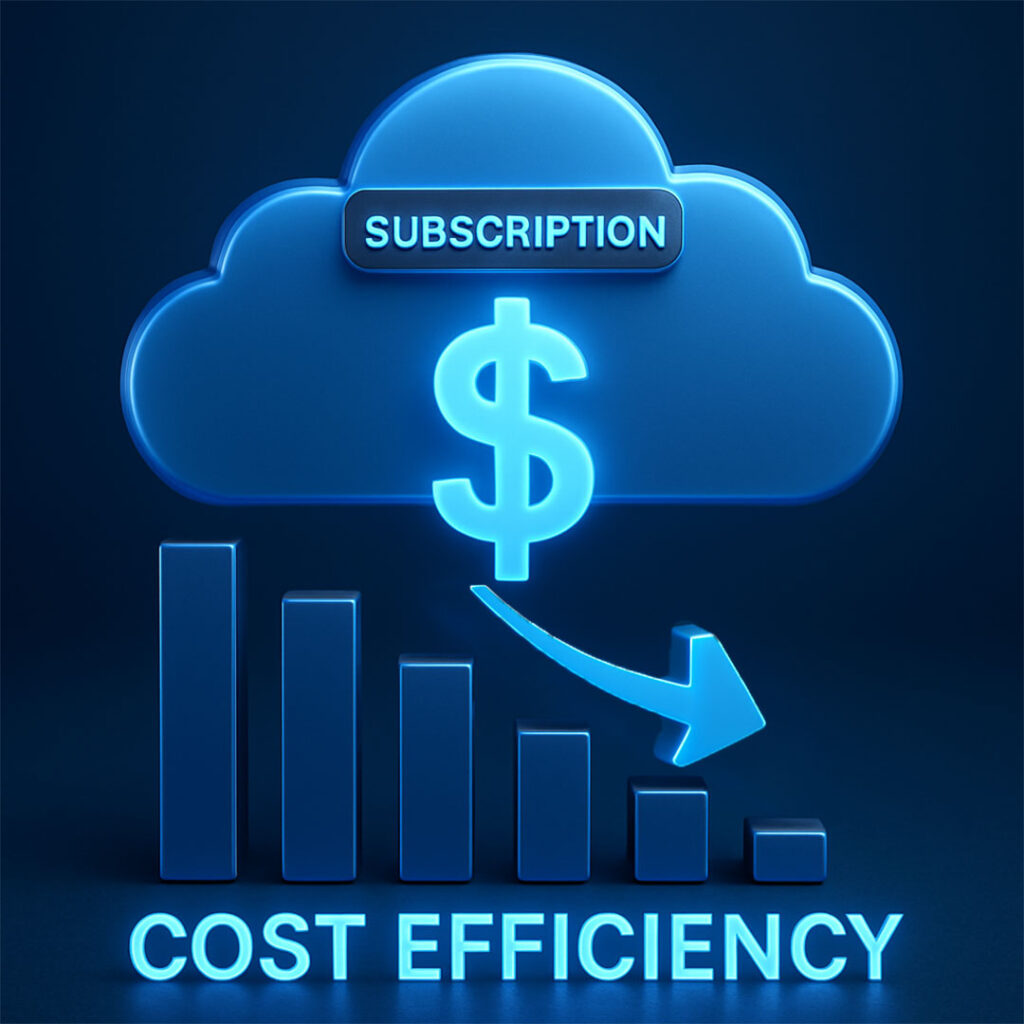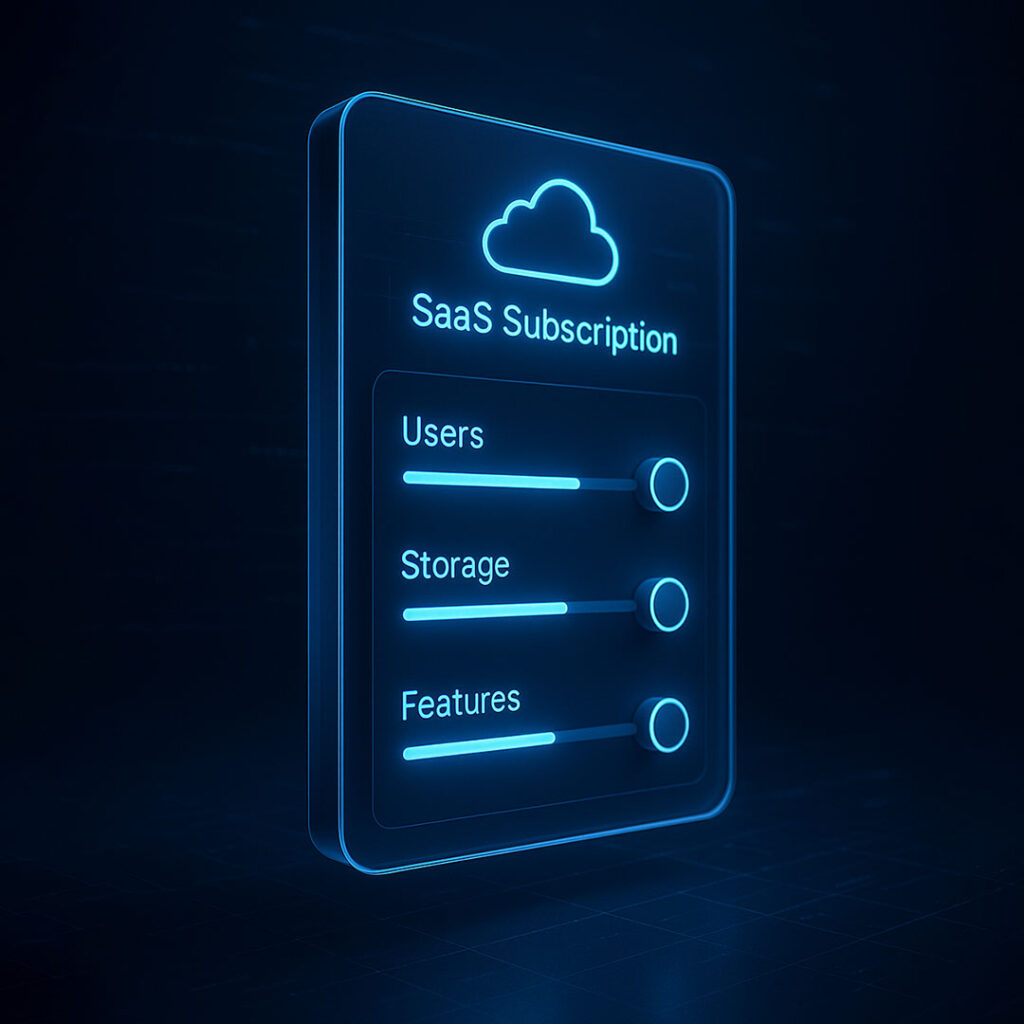Cloud-based Software-as-a-Service (SaaS) platforms have become central to digital transformation across industries. Today, over 90% of Fortune 500 companies are estimated to use SaaS solutions to streamline operations, enhance collaboration, and accelerate innovation. This widespread adoption reflects a broader shift toward cloud computing, as organizations seek greater agility, scalability, and cost efficiency.
What Is Cloud Computing?
Cloud computing refers to the delivery of computing services, such as data storage, processing power, and software, over the internet instead of using on-premise servers or physical hardware. This model allows companies to access tools and data remotely, scale their operations more efficiently, and reduce infrastructure costs.
SaaS is one of the three main models of cloud computing, alongside:
- Infrastructure as a Service(IaaS)
- Platform as a Service (PaaS)
- Software as a Service (SaaS)

What Is SaaS?
SaaS (Software as a Service) is a cloud-based model where users access software via a web browser, without the need to install or maintain it locally. Instead of purchasing software outright, companies subscribe to applications that are hosted and maintained by third-party providers.
Common examples of SaaS include:
- Google Workspace
- Microsoft 365
- Slack
- Zoom
- Dropbox
- AllPings
These platforms are widely used for everything from communication to file sharing to customer management.

Key Benefits of SaaS for Enterprises
As digital business operations grow more complex, SaaS platforms have become a foundational part of many enterprise tech stacks. Key benefits include:
1. Cost Efficiency
SaaS eliminates the need for expensive IT infrastructure or upfront software purchases. Companies pay on a subscription basis, making budgeting more predictable and lowering the total cost of ownership.


2. Scalability and Flexibility
SaaS platforms can scale quickly to meet growing demands. Businesses can easily add or remove users, increase storage, or activate new features as needed.
3. Remote Access and Collaboration
With hybrid and distributed work models on the rise, SaaS tools enable teams to collaborate in real time, from anywhere. Platforms like Microsoft Teams, Slack, and Zoom support seamless communication across departments and time zones.


4. Enhanced Security
Most SaaS providers implement robust security protocols, such as encryption, multi-factor authentication, and compliance with industry standards, to protect sensitive data and ensure regulatory alignment.
5. Fast Deployment and Automatic Updates
SaaS applications are typically ready to use almost immediately, with minimal setup. In most cases, updates are automatic, ensuring that users always have access to the latest features and security enhancements.

Top SaaS Platforms Used by Fortune 500 Companies
Some of the most widely adopted SaaS tools across enterprise environments include:
- Salesforce – A powerful CRM platform for managing customer relationships and automating sales pipelines.
- Microsoft 365 – A suite of productivity tools including Word, Excel, Outlook, and Teams.
- Workday – Cloud-based software for HR, finance, and workforce planning.
- Slack – A collaboration tool designed for internal messaging and workflow integration.
- HubSpot – A marketing, sales, and customer service platform for customer engagement and automation.
These tools are not limited to large enterprises—they’re also widely adopted by startups, SMBs, and nonprofits due to their accessibility and scalability.

The Future of SaaS in Enterprise Environments
SaaS adoption among Fortune 500 companies is expected to continue growing, especially as platforms integrate emerging technologies like artificial intelligence (AI), machine learning (ML), and predictive analytics.
Companies like Microsoft, Salesforce, Google, and Adobe are already embedding intelligent capabilities into their SaaS products to help organizations automate processes, extract insights, and make faster decisions. Meanwhile, Amazon Web Services (AWS) provides the infrastructure backbone powering many of these platforms, though it is more commonly categorized under IaaS.

The increasing use of SaaS among Fortune 500 companies is not just a trend—it’s a strategic response to the evolving demands of a digital-first world. By offering cost-effective scalability, real-time collaboration, enhanced security, and operational flexibility, SaaS platforms help organizations stay competitive and resilient.
As technology continues to advance, cloud-based SaaS tools will play an even more critical role in supporting everything from day-to-day tasks to large-scale innovation and growth.




